Three of VinConnect’s top customers and I recently traveled to Italy for a wine tasting trip to Piemonte, the home of Barolo, Barbaresco and Alto Piemonte, as well as the legendary Nebbiolo grape that stars in all three. As this was VinConnect’s third trip in the past 5 years, we leveraged our many existing relationships to have some memorable visits with old friends, and also added a few first-time visits to legendary and lesser-known producers that really enhanced the experience.
For those with short attention spans, here are two quick takeaways:
The region continues to grow rapidly as a top tourist destination, featuring more and higher-quality lodging, restaurant and bar options each time I visit. More details on all are below. If you are interested in wine travel at all I strongly recommend you get to Piemonte sooner rather than later, as now that it has been “discovered” it gets busier and busier with each passing year.
In terms of recent vintages, the 2013s showed as powerful and delicious, as expected. The 2014s we tasted were surprisingly good given the infamous weather challenges that year, with the 2014 Barbarescos surprisingly delicious since they had much more favorable weather than their brothers in Barolo. The 2014s we tasted were lighter and more forward than the 2013s, but both were quite enjoyable in their own ways.
Monday — Arrival into Alba
After arriving on an overnight flight from the U.S., our group met up in Milan and piled into the wagon for the roughly two-hour drive to Alba. Spirits were high as this was a much-anticipated excursion. I even gave our customers some “homework” to prepare in advance — Kerin O’Keefe’s book Barolo and Barbaresco: The King and Queen of Italian Wine, which does a good job covering the history and geography of the region, the people, the top estates, and most importantly the wines. So we had a lively conversation, especially after a stop at one of Italy’s renowned AutoGrill chain along the motorway for a quick panini and some caffeine.
We wasted no time upon arrival, dropping our gear at our apartments and immediately heading over to Ceretto (profile, website). Located just outside Alba, Ceretto has a modern, dynamic winery with a fantastic contemporary tasting room. Our host Edoardo took us through a fabulous tasting of their current Barolos and Barbarescos, and even was kind enough to share a bottle of their top wine Barolo Bricco Rocche from 2005, which was absolutely gorgeous and in perfect maturity. Of the current releases, I was particularly impressed with the Barbaresco Bernardot 2014, which showed masculinity and complexity.
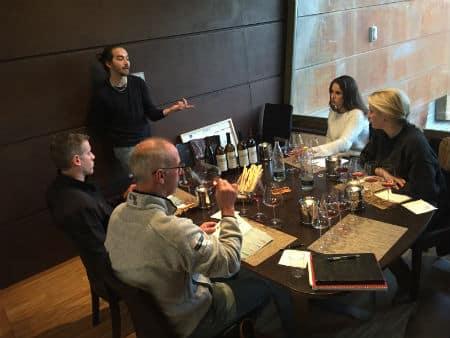
Dinner options are pretty limited on Mondays in Alba, especially since this week represented the first downtime following several weeks of the annual truffle festival, which meant a couple of our usual Monday options were closed for a respite. We ended up at La Piola, a casual but classy contemporary spot on the piazza next to the Duomo in Alba, my guests enjoyed their introduction to the typical Piemontese cuisine with vitello tonnato, carne cruda, tijarin and agnolotti.
Tuesday — Barolo (Vajra, Borgogno, Chiara Boschis)
We kicked off the morning at what is always one of my favorite visits — with the lovely G.D. Vajra (website) family. They run both their family estate as well as Luigi Baudana, an estate they acquired several years ago but which they manage separately. The always lovely Francesca Vajra took us through a tasting of 10 wines in total, most of them Barolos from the 2014 vintage from both Vajra and Luigi Baudana. The wines were all impressive, especially given the vintage conditions, showing a bit lighter and higher-toned than usual. The standout for me was the Vajra Barolo Ravera 2014, which was a bit darker, deeper and richer than the other wines we sampled.
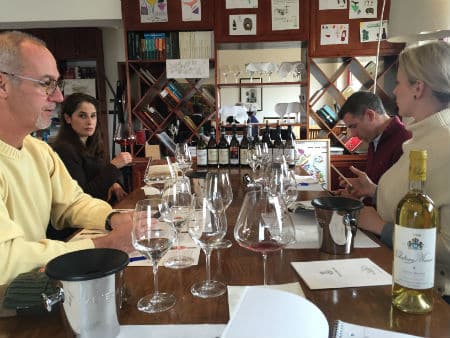
Our next stop was to the historic cellars of Giacomo Borgogno (profile, website) in the center of the Barolo village. Founded in 1761 in that same location, a tour of the historic winery cellars and modern tasting room is always a treat. Since they typically release their Barolos a year later than other producers (preferring additional time in the bottle), we primarily tasted the 2012 vintage, where the Barolo DOCG 2012 was my standout for its great balance and classic flavor profile. Borgogno is a rarity in Piemonte since they keep significant stocks of previous vintage wines on hand, meaning that you can taste and purchase wines going back to the 1960s. This visit was typical in that we were able to taste a few vintages of Riservas, from 2004 and 1998. While both were tasty, the 2004 seemed younger than I might have expected, while the 1998 seemed older.
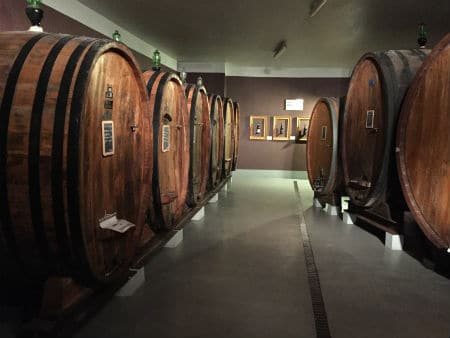
For lunch we made a quick stop at Barolofriends, a nice wine bar and trattoria right next to the castle in the Barolo village. This is a great choice for anyone visiting Barolo, serving the classic Piemontese dishes with a few twists in a contemporary setting. It’s quick, delicious, and excellent service — a perfect spot for lunch or a casual dinner.
Our next visit was another of my personal favorites, E. Pira – Chiara Boschis (profile, website). Chiara is one of my favorite winemakers, always witty and charming, but with piercing commentary and insights when needed. Our tasting here was focused on the upcoming 2014 Barolo vintage, with the wines showing a similar high-toned profile as elsewhere. Among the wines sampled my favorite was the Barolo Mosconi 2014, which had similar floral notes and elegance as the Cannubi but a touch more structure.
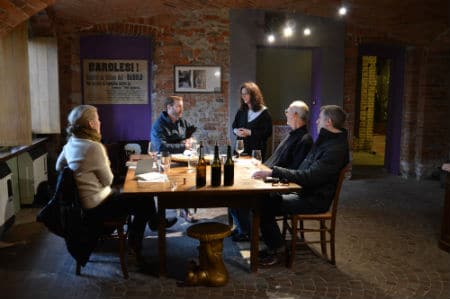
Back in Alba for dinner we chose La Libera, one of the first contemporary dining spots in Alba when it opened around a decade ago. For many years this was generally regarded as the “best restaurant in Alba” by foodies, but it’s since been surpassed by the 3-Michelin-star Piazza Duomo. My experiences here have been mixed over the years, with food and service both sometimes brilliant, sometimes indifferent. My previous meal here 18 months ago was delicious, but unfortunately this one wasn’t — the food fine but undistinguished, but the service pretty poor. With so many other good options in town and in the broader region, I think it’s time I dropped this one from my list of regular stops.
Wednesday — Serralunga d’Alba (Massolino, Rivetto, Vietti)
Wednesday began with our visit to Serralunga, the village known for soils which typically produce the most powerful wines in Barolo, and our old friend Franco Massolino (profile, website). I generally find Massolino’s Barolos to be consistently strong across the full lineup and whatever the vintage, and once again this was the case. Here we tasted a mix of the 13 and 14 vintages, where the diametrically different growing seasons were quite evident. My favorite wine of the tasting was the Vigna Rionda Riserva 2011, an absolutely stunning, classic, structured and beautiful wine. I can’t wait for that to be released soon — I’ll definitely be getting some for my personal cellar.
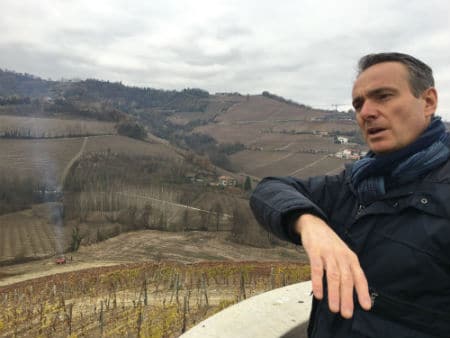
For lunch we once again walked through the gate an into the village of Serralunga, for the pilgrimage to Centro Storico, perhaps one of my favorite restaurants in the world. A bustling osteria/bistro, there is always a good crowd, a great vibe, a few Iberico ham legs on the counter, and an incredible Champagne list, all hosted by the irrepressible Alessio. I love everything about the place, and walking in the door there makes me happy every time I visit.
Next, we traveled down the road to Rivetto (profile, website). Rivetto is a relatively newer estate in the U.S. market, but one that definitely deserves the attention it has been getting of late. Unfortunately the dynamic proprietor Enrico Rivetto was called away on travel, but we still got to enjoy a lovely tour of the cellars and tasting of a great lineup of wines from vintages 2016 to 2011. The most memorable wines from this visit for me were the Barolo Briccolina 2012 which showed great structure and ageworthiness, as well as the Nascetta 2015, from the underappreciated white variety native to Piemonte that is garnering huge interest in the region these days.
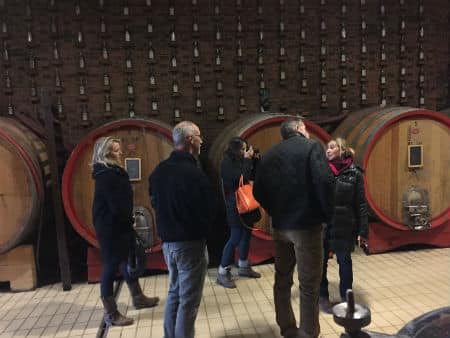
Departing Serralunga we were then off to Castiglione Falleto and the amazing cellars and wines of Vietti (website). Unfortunately, neither Luca Currado nor his lovely wife Elena was able to receive us, but that didn’t stop us from having a nice tour and tasting some delicious wines. All of the wines here were excellent (as always), but forced to choose I might give the nod to the Barolo Brunate 2012, which showed a bit more softness and drinkability than the powerful and structured 2013s we tasted.
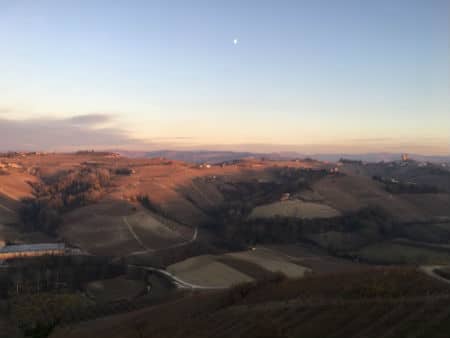
For dinner we ended up eating casually at Voglia di Vino in Alba. Perhaps the perfect wine bar, this has everything you want — walls lined with great, reasonably-priced wine selections, a brief but tasty menu, and a good crowd exuding a great vibe. This meal was outstanding as much for the experience and the wines as the food, but that was excellent as well.
Thursday — Barbaresco and more (Marchesi di Gresy, Pelissero, Contratto)
A very busy Thursday began with us leaving Alba in the other direction for once, headed to spend the day in Barbaresco and beyond. Our first stop was to visit Marchesi di Gresy (website), one of Barbaresco’s most historic producers. In addition to a lovely cellar tour, we tasted a huge lineup of wines with winemaker and ex-pat Kiwi Jeffrey Chilcott. Jeffrey was one of the first New World outsiders to arrive and stay in Piemonte more than a dozen years ago, and has become a standard-bearer, advisor and good friend to all who have followed his path. In tasting through a dozen bottles or more of consistently delicious and well-made current releases, my favorite was the Barbaresco Gaiun 2013. Beyond that, however, Jeffrey also treated us a couple of older wines — a really fantastic Barbaresco Gaiun 2011 that showed off that year’s exceptional vintage, and a beautifully soft and spicy Barbaresco Gaiun 2006 that was tasted blind and nailed by one of my colleagues!
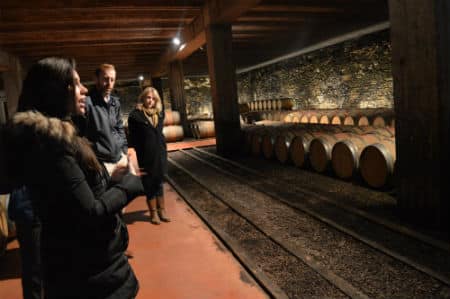
For lunch Jeffery guided us toward Ristorante Rabaya just outside Barbaresco. While certainly one of the “classic” restaurants in the area, both the room and the food struck us as a bit fussy and dated, unfortunately — next time we will make another choice.
Then it was on to Pelissero (profile, website), where the cellar construction never seems to end. How they keep churning out great wines despite all the development I’m not sure, but it certainly is an impressive feat. After touring the new cellars and gorgeous tasting room with beautiful vineyard views, we enjoyed a great selection of current release wines. My personal favorite was the Barbaresco Tulin 2013, which I once again found a bit more classic and elegant than its always-powerful big brother Vanotu.
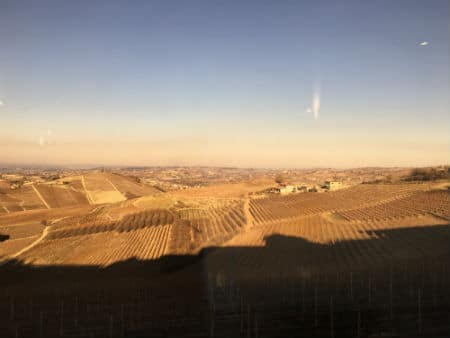
From there we jumped back in the car for the drive to the lovely village of Canelli and the winery of Contratto (website), producer of Metodo Classico sparkling wines and Vermouths owned by La Spinetta proprietor Giorgio Rivetti. Some 30km from Barbaresco, Canelli was the birthplace of Italian Metodo Classico wines, and was specifically included in the Piemonte region’s designation as a UNESCO World Heritage Site in 2014. Contratto is probably the most well-known of the half-dozen original brands from Canelli still in operation today, and our tour of the historic cellars was absolutely stunning. The wines were pretty darn delicious as well, where they generally do very low or no dosage given the natural sweetness of the fruit they harvest here. My favorite was the Blanc de Noir 2012, with beautiful pinot fruit but enough structure that it would greatly benefit from a few years’ aging.
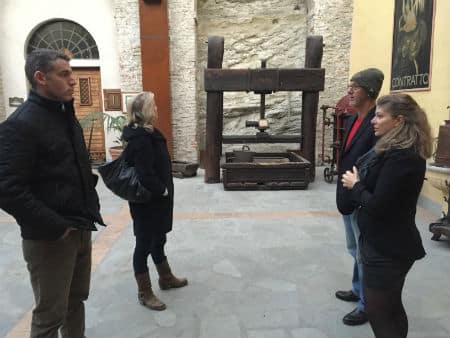
Thursday’s dinner was at one of Alba’s classics, the lovely Osteria dell’Arco. In addition to a great wine list, they serve consistently delicious food with solid service in a comfortable, casual room. I have eaten here on each of my five visits over the years, and never had an experience that wasn’t excellent in every respect. Always a great choice…
Friday — Two superstars and and one upstart (Bartolo Mascarello, Giacomo Conterno, David Fletcher)
Friday began with my first-ever visit to the historic cellars of Barolo legend Bartolo Mascarello (no website). Since proprietor Maria Teresa Mascarello is too busy with manual labor around the winery, cellar hand and ex-pat American Alan Manley is the host for tours and tastings. He provided some great history and color about the estate and its storied place in the context of the region’s development, as well as details of their hyper-traditional farming and vinification practices. Here they produce only a single, blended Barolo, as has long been the tradition, and we were lucky enough to be able to taste both the 2013 and 2014 vintages. Once again the vintage comparisons were evident, with the 2014 showing open, light, and pretty, while the 2013 was darker in fruit and color and much more structured, even with the bottle having been opened the day before.
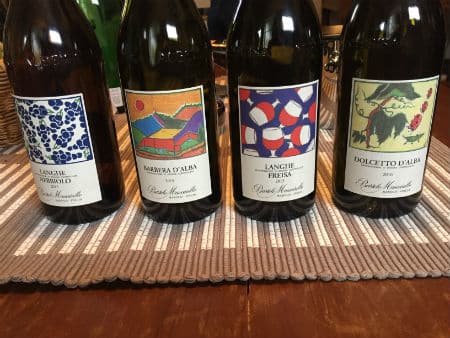
From there we hopped into the car and headed to the traditional village of Monforte d’Alba. For lunch we settled on Osteria La Salita, a rustic traditional spot just through the old village gates and up the rough-hewn cobblestone streets. We had this quiet spot all to ourselves, with the mother in the kitchen and her daughter serving us delicious, typical pasta dishes that hit the spot.
Our next superstar visit was to Giacomo Conterno (no website), where we had the pleasure of touring and tasting with proprietor Roberto Conterno. I have never seen a winery cleaner than his — I would sooner eat off his floors than off my own kitchen counters. His wines show the same incredible attention to detail, where classic vinification techniques yield wines of incredible complexity and nuance. Here I was most impressed with the Barolo Ceretta 2013, which for me was undoubtedly one of the wines of the trip. That said, we also had the chance to taste barrel samples of the Monfortino 2013 and 2014 — interestingly, these wines showed less dramatically different to me than the other 2013/2014 vintage comparisons we had done. Consider that comment only FWIW, as both wines were absolutely delicious (though certainly in need of time).
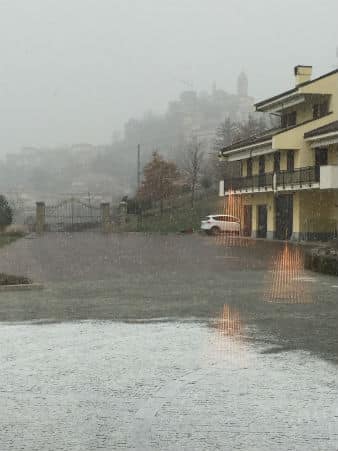
We were met with some beautiful snowfall after our tasting, which made navigating our way down the hills of Monforte a bit of an adventure. We succeeded without incident, and then it was on to our final stop, with Dave Fletcher (website) in Barbaresco. Fletcher is an ex-pat Aussie who found his way to Piemonte almost a decade ago, and in addition to his winemaker gig at Ceretto produces several wines under his own label. In addition to making delicious Barolo and Barbaresco from sourced fruit, his most exciting wine was his Langhe Chardonnay 2016, which in addition to having good typicity was ripe, warm and wonderfully drinkable. Unfortunately his production is tiny and wines incredibly hard to find, but if you ever come across them I highly recommend giving them a try.
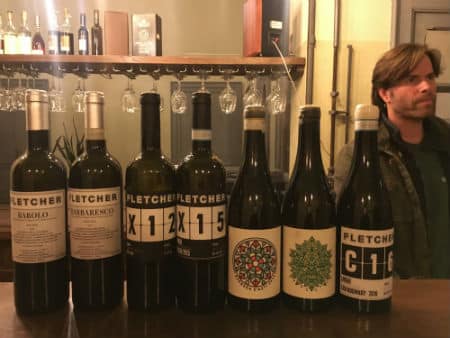
Fine dining in Piemonte was long defined by La Ciau del Tournavento, a renowned restaurant in the village of Treiso near Barbaresco that has one of the world’s great wine cellars. This one-Michelin-star restaurant has the pomp and circumstance of many restaurants further up the rating hierarchy, but I have had mixed experiences in my several meals there over the years. I would consider this evening’s meal “mixed” as well, with solid food but surprisingly disappointing service. Still, the cellar tour is a highlight of any visit to Piemonte, and if you are able to dine in light that allows you to see the amazing vineyard and mountain vistas outside its huge wall of windows, it’s certainly worth the experience at least once.
Saturday — Alto Piemonte (Boca and Gattinara)
For our last day we decided to change it up and make the 100km drive to the Alto Piemonte region northeast of Torino. Here we started out tasting in the village of Boca at perhaps my favorite producer in the region, Le Piane (website). Many consider Le Piane the catalyst for the renaissance of the Alto Piemonte region, when in the 1990s Swiss journalist Christoph Kuenzli discovered the region and subsequently acquired the estate of the legendary Antonio Cherri. This winery is a throwback to a kinder, gentler time in all respects, and the wines ooze traditional values and class. The Boca 2012 (85% Nebbiolo, 15% Vespolina) was my pick from a great lineup, with delicious dark fruit and inviting warmth.
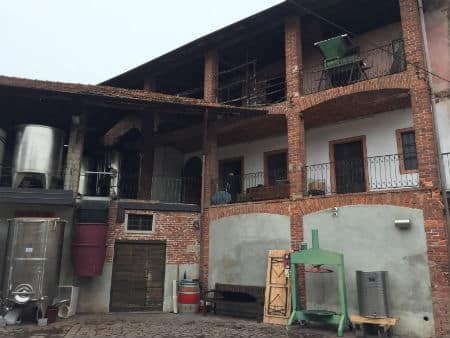
For lunch we headed to the village of Gattinara, arguably the center of the Alto Piemonte region. Here we settled on Trattoria del Soggiorno, a traditional spot in the town center with excellent homespun food and service. While Gattinara was incredibly quiet on a chilly fall Saturday, I can imagine it’s quite fun on a lively weekend with nice weather.
Our final visit of the trip was to Travaglini (website), probably the best-known producer of wines from Alto Piemonte. They have been in the U.S. market for decades, and their wines can easily be identified from their uniquely-shaped bottle, designed to capture the sediment often thrown by these wines when served with proper aging. Also made in a very traditional style, these wines definitely need age to soften up and truly blossom. Here it was the Gattinara Riserva 2012 that caught my fancy, but I would give it at least 5 years before drinking.
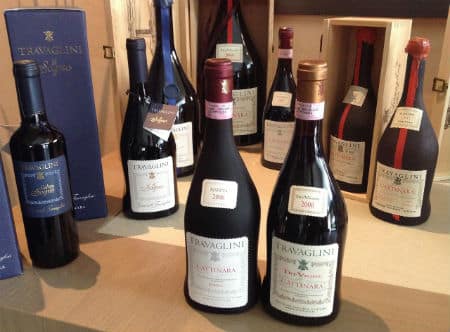
With that our tasting agenda was complete and it was back to Milan for a nice walk around the city to stretch our legs, see a few sights, enjoy the Christmas decorations, and grab a couple of final drinks to synthesize what was a fantastic trip in all respects. I truly believe Piemonte is my favorite wine region of all to visit — the beautiful geography, delicious food, and wonderful people are all great, and yet for now it still remains a very “real” and grounded place. With more tourists coming each year, however, it’s not clear how much longer it can retain its traditional ways and charms. So if you have an interest, I suggest you get there soon to enjoy it before it gets even more discovered.
To that end, if there is anything I can do to help or provide you any further information beyond what is included here, please contact me at info@vinconnect.com and it would be my pleasure to assist you however I am able.
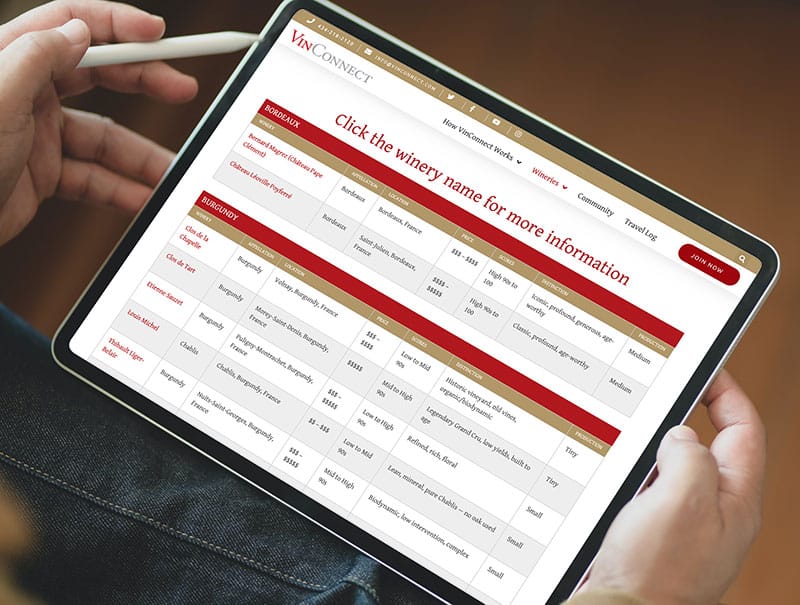
One Response
That looked like a great tour. Something we might be interested in.
Steven Campbell